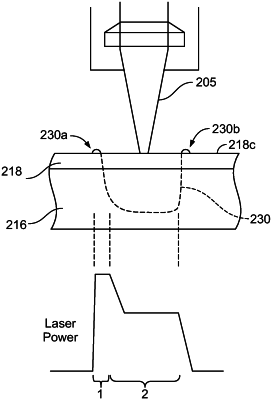| CPC B26B 21/4068 (2013.01) [B23K 26/0626 (2013.01); B23K 26/0648 (2013.01); B23K 26/0652 (2013.01); B23K 26/0665 (2013.01); B23K 26/082 (2015.10); B23K 31/003 (2013.01); B26B 21/4012 (2013.01); G02B 13/0005 (2013.01); G02B 13/22 (2013.01)] | 29 Claims |

|
1. A method of joining a razor blade to a blade support to form a razor blade assembly, the method comprising:
directing a laser beam having an adjustable power output at an upper surface of the razor blade; and
while advancing the laser beam along the razor blade:
a) applying the laser beam at a first power output to the razor blade for a first time period to form a first portion of a weld area;
b) reducing the first power output of the laser beam to a second power output; and
c) applying the laser beam at the second power output to the razor for a second time period to form a second portion of the weld area joining the razor blade to the blade support, wherein the weld area formed in steps a) and c) has at least one of a ratio of depth/width that is greater than about 2/1 and a ratio of length/width that is greater than about 5/1;
wherein a ratio of the second time period/first time period is greater than about 5/1; and
wherein any protrusions formed on the upper surface during steps a) and c) have a height above the upper surface that is no more than 0.025 mm.
|